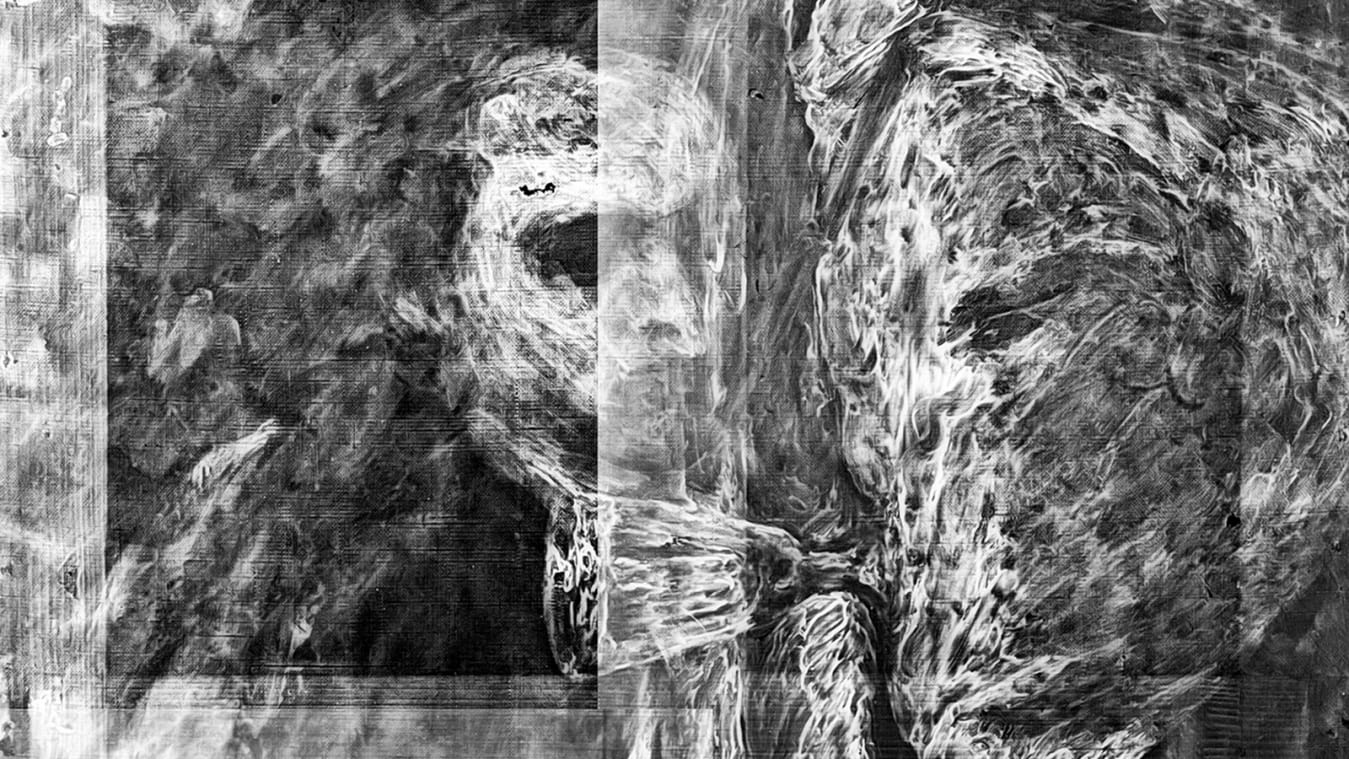(CNN) — Cincinnati Museum of Art Chief Curator Serena Ury was doing a routine inspection of the institution’s prized Paul Cézanne painting “Still Life with Bread and Eggs” (Le pain et les œufs) when she noticed something “off.”
For a work of art from 1865, the appearance of small cracks is not surprising. But instead of being evenly distributed across the canvas they were concentrated in two specific areas. In addition, they showed small flashes of white in contrast to the melancholic palette of the French painter’s “dark” period.
“I thought there was something down there that we had to look at,” Uri said in a video interview.

Paul Cézanne’s “Still Life with Bread and Eggs,” painted in 1865, has been in the collection of the Cincinnati Art Museum for nearly 70 years. Credit: Courtesy of the Cincinnati Museum of Art
The curator asked a local medical institution to bring a portable X-ray machine to the museum, where a technician scanned the 30-inch-wide oil painting in several sections. By digitally piecing together a series of images with Photoshop, Urry found “white spots,” indicating the presence of too much lead white pigment.
“I was trying to figure out what the hell they were … so I turned it (90 degrees),” he recalled. “I was alone, but I think I said ‘Wow’ out loud.”
When the scanner was rotated vertically, the figure of a man appeared, his eyes, hair and shoulders in the form of dark spots. Given the condition of the figure’s body, Urry and his colleagues at the museum believe it is Cézanne.
“I think everyone’s opinion is that it’s a self-portrait … He’s posed like a self-portrait: that is, he’s looking at us, but his body is turned away.”
“If it’s a portrait of someone other than him, it could be from the front,” he added.
If so, this would be one of the earliest recorded depictions of the painter, who was in his mid-20s when he completed the still life. Cézanne is known to have produced two dozen self-portraits, although they were all completed after the 1860s and were mostly executed in pencil.
“We begin the process of finding out as much as we can about the portrait,” Peter Jonathan Bell, curator of the Museum of European Painting, Sculpture and Drawing, explains by email. “Among other things, we will collaborate with Cézanne experts around the world to identify the sitter and conduct further image and technical analysis to help us understand what the portrait looks like and how it was made.”
“Together, this information may contribute to our understanding of a formative moment early in the career of this great artist.”
Unanswered questions
Part of the Cincinnati Museum of Art’s collection since 1955, “Still Life with Bread and Eggs” is painted in a realistic style — inspired by the Spanish and Flemish Baroque periods — that Cézanne experimented with early in his career. He later developed a more colorful aesthetic under the tutelage of Impressionist painter Camille Pissarro, before pioneering the more structured style of the Post-Impressionist movement.
In the mid-1860s Cézanne developed a new rough painting technique, often using a palette knife to apply colors. But whether his hidden portrait was an experiment gone wrong or whether he simply recreated an old canvas to save money remains a matter of conjecture.

The X-ray image shown here in its entirety reveals the presence of white lead used as a pigment. Credit: Courtesy of the Cincinnati Museum of Art
Another possibility is that Urry was bold, that the painter was suddenly inspired and “needed a canvas,” a theory supported by the fact that he did not remove much of the paint before starting the work.
“He clearly didn’t scratch it,” explained Uri.
There are many questions about what colors Cézanne used and how complete his original portrait was. Museum experts hope to study the painting using advanced scanning processes, such as multispectral imaging, which can reveal the underlying brushwork by assessing textures invisible to the naked eye. X-ray fluorescence spectroscopy, meanwhile, can reveal which chemical elements are present and which color pigments the artist used.
“We will contact colleagues in conservation and the museum to see if we can access other equipment,” Uri explains.
For now, however, the museum is waiting for the “Still Life with Bread and Eggs” display again. Since its discovery in May, Urry has cleaned the painting and thinned the varnish on its surface. It will return to public view with an X-ray image from December 20.
Subsequent scans and analyzes would require transferring the work to another institution, causing logistical problems and allowing museum visitors to miss out on seeing one of the two Cézannes in its collection. “You can’t get in a car and drive to Chicago,” Uri explains.
“The portrait has been there since he painted it, and it’s been there (we bought it) since 1955,” he added, “so there’s no rush.”


:max_bytes(150000):strip_icc()/ninoprodigio1-3c5469ab9d24479995ed7a38db7cc252.jpg)


